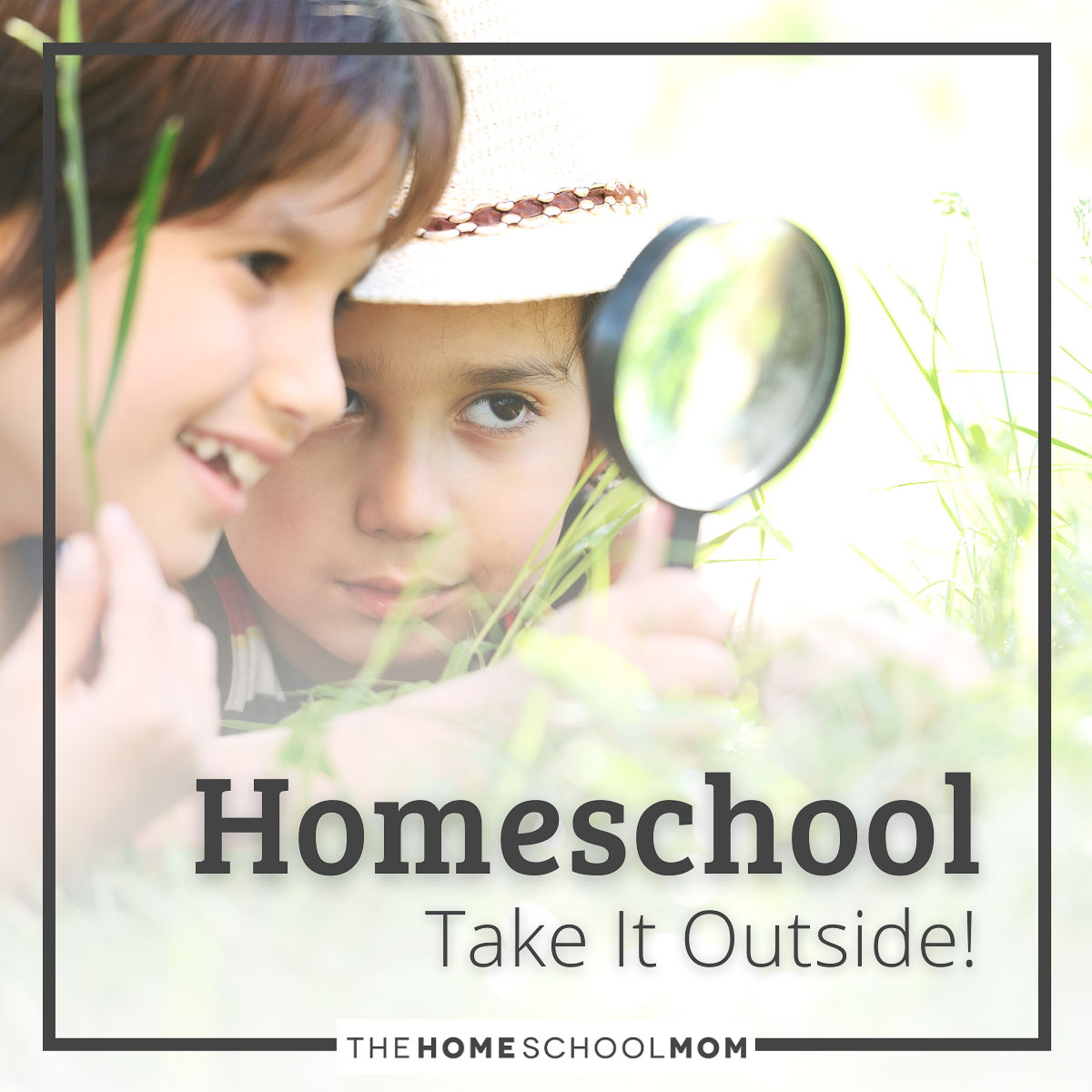- Learning about plants and creatures
- Getting exercise
- Not caring about crumbs and spills
- Using big spaces for learning: writing with chalk on sidewalks; making mountains in the sandbox
- Changing the pace-enjoying a brain break

For some kids, learning outside is more engaging than learning inside, but we adults may have to wrap our minds around the ways they can learn outside.
How about going on an alphabet walk amidst rocks and trees?
How about taking a nature walk and bringing in pine cones, rocks, and feathers for a nature table?
How about balancing technology use with time in nature?
How about helping kids learn to care for the environment?
Do kids need to read a science book and do worksheets to learn botany basics, or can you help them understand seed germination, plants' need for water and soil, and the growth of plants by planting a vegetable garden or herbs in a pot?
Learning outside helps children use their hands and their senses to understand the world.
There is also an emotional connection that can come to the fore outside. Yes, I loved when my kids all went out to play together, giving me some quiet time indoors.
But I also loved our "walk and talks," where we wandered and wondered together, mixing silly and serious subjects without an agenda. I loved our haphazard camping trips, struggling to put up that old tent (all we could afford) and snuggling around a campfire.
Building memories is part of building minds.
But you can also take "regular homeschooling" outside. Read Take School Outdoors, Part 1 and Take School Outdoors, Part 2 for more specific, concrete ideas.




 A popular speaker at homeschooling conferences, business groups, and parents’ groups, Jeanne Potts Faulconer homeschooled her three sons in North Carolina, Mississippi, and Virginia for twenty years. Holding her Master of Arts degree in Communication, Jeanne conducted portfolio evaluations for Virginia homeschoolers for evidence of progress for many years. Jeanne is a former college faculty member, former editor for several publications, news correspondent for WCVE, and former director of Brave Learner Home. She is the contributing editor for TheHomeSchoolMom newsletter and writes the popular Ask Jeanne column addressing homeschool parents' questions here at TheHomeSchoolMom.
A popular speaker at homeschooling conferences, business groups, and parents’ groups, Jeanne Potts Faulconer homeschooled her three sons in North Carolina, Mississippi, and Virginia for twenty years. Holding her Master of Arts degree in Communication, Jeanne conducted portfolio evaluations for Virginia homeschoolers for evidence of progress for many years. Jeanne is a former college faculty member, former editor for several publications, news correspondent for WCVE, and former director of Brave Learner Home. She is the contributing editor for TheHomeSchoolMom newsletter and writes the popular Ask Jeanne column addressing homeschool parents' questions here at TheHomeSchoolMom.
Leave a Reply